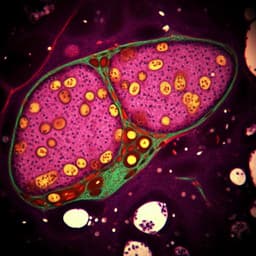
Medicine and Health
Male-selective effects of oxytocin agonism on alcohol intake: behavioral assessment in socially housed prairie voles and involvement of RAGE
S. Potretzke, Y. Zhang, et al.
Discover the groundbreaking research by Sheena Potretzke and colleagues on the oxytocin peptide system as a revolutionary method for treating alcohol use disorder. Their study reveals fascinating insights into how oxytocin receptor agonism affects alcohol consumption differently in males and females, opening new avenues for individualized treatment strategies.
~3 min • Beginner • English
Related Publications
Explore these studies to deepen your understanding of the subject.







